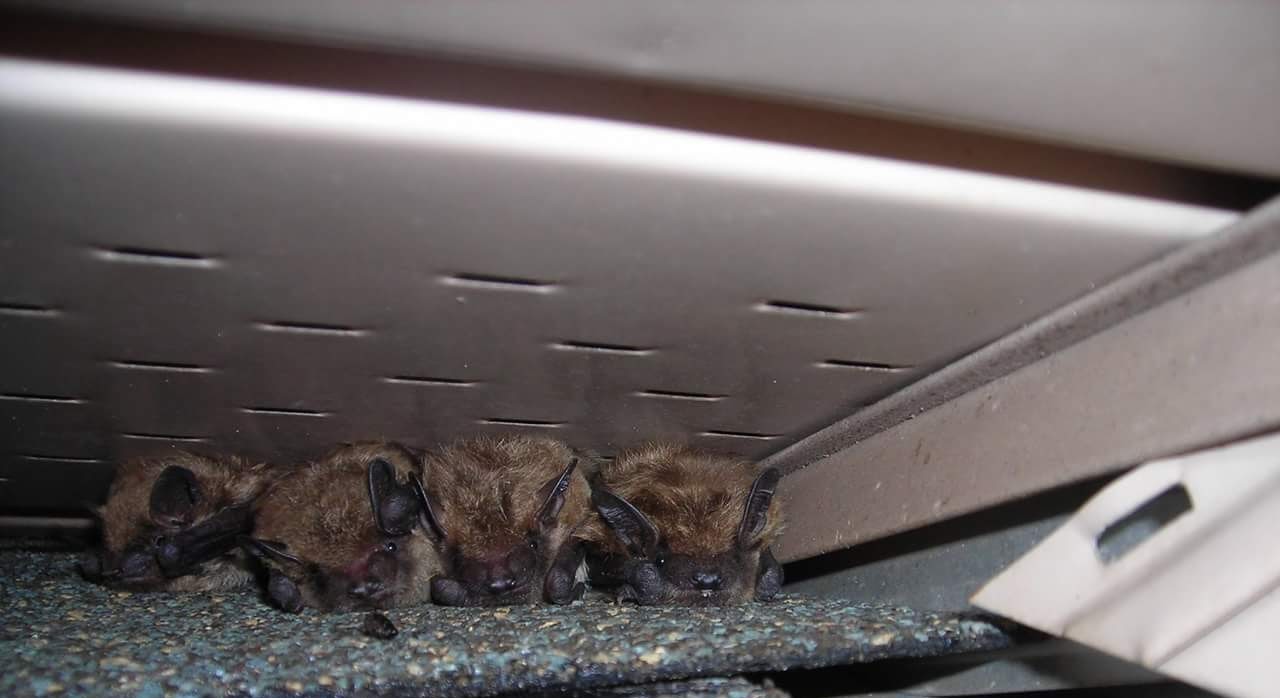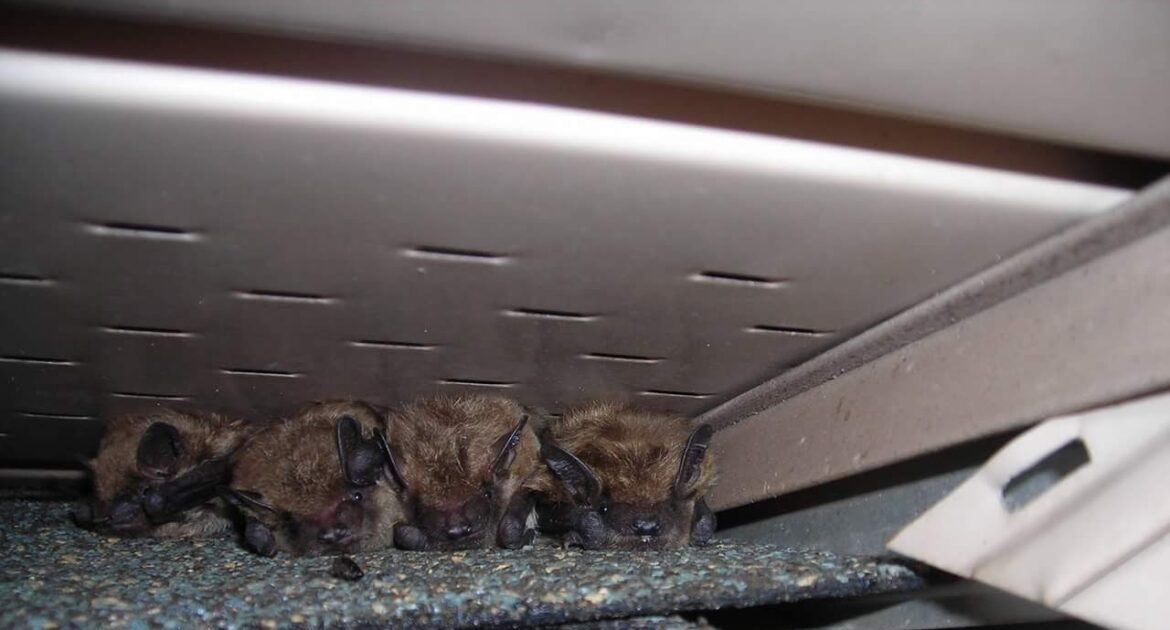Your seasonal home is your escape from the day-to-day grind, a place to relax, recharge, and spend time with family and friends. Whether it’s a cabin by the lake or a cozy spot in the woods, your seasonal property is meant to be enjoyed on your terms. But while you’re away, wildlife like bats may see your home differently—as the perfect place to set up their roost.
At Skedaddle Humane Wildlife Control in Baltimore, we understand how important it is to keep your seasonal property safe and comfortable. Bats play a crucial role in the ecosystem by controlling insect populations, but they don’t belong in your attic or walls. Over time, a bat infestation in a seasonal property can lead to unpleasant smells, damaged insulation, and even health risks. Recognizing the signs of bats in seasonal homes early can save you a lot of time, money, and stress.
If you’re wondering, “How do you spot bat activity in seasonal properties?” the answer lies in paying attention to the signs they leave behind. From droppings to strange noises and faint stains, bats aren’t hard to identify once you know what to look for. Learning how to detect bat activity in properties will help you prevent costly damage and keep your retreat bat-free. Below, we’ll guide you through the common clues, why bats are attracted to seasonal homes, tips for prevention, and what to do if you find that bats have moved in.
Why Seasonal Properties Attract Bats
Seasonal homes are tailor-made for bats simply because they are quiet, dark, and often unoccupied for months at a time. These conditions mimic the caves where bats naturally roost, making your property very inviting. Attics, empty chimneys, and gaps in older structures offer plenty of hiding places for bats to nest.
When fall comes, bats look for safe spaces to hibernate. If your seasonal home has gaps or cracks that allow easy access, they could decide to settle in. Understanding why bats find seasonal properties so appealing can help you keep them out in the first place. When prevention isn’t enough, however, knowing the signs of bats in seasonal homes lets you act fast.
Warning Signs of Bat Activity
Many bat colonies grow undetected for months, sometimes years before property owners realize they’ve got a problem. The best way to handle a bat issue is to spot it early. Whether you’re opening your property for the season or packing up for the winter, keep an eye out for these clear signs.
Guano (Droppings) Accumulation
Bat droppings, or guano, are small and dark, resembling crumbled coffee grounds. You’ll often see guano piled near walls, chimneys, or attic vents. Not only is guano unsightly, but it can stain surfaces and cause strong odors to linger in your home.
Guano is an unmistakable sign when you’re trying to detect bat activity in properties. Be cautious about handling or cleaning it, as it can carry harmful pathogens. Always inspect for guano when you’re opening or closing your seasonal home.
Noises in the Attic or Walls
Bats are nocturnal, so their activity peaks during the night. While resting, they communicate with one another through high-pitched squeaks, chirps, or scratching sounds. If you hear these noises coming from your chimney, attic, or walls, it’s a good indication you’ve got a bat infestation in your seasonal property.
These sounds are particularly noticeable at dusk and dawn when bats leave and return from hunting. Catching these sounds early will help you determine whether bats are sharing your space.
Stains Around Entry Points
When bats move in and out of your home, their bodies leave grease or oil stains on surfaces near their entry point. Look for dark smudges or streaks on walls, rooftops, vents, or around small holes in your siding. It’s a subtle but important clue that can help you locate the colony’s hideout.
Strong, Musty Smell
A bat colony in your home produces piles of guano and urine, which eventually create a strong odor. The smell spreads quickly in closed-off spaces like attics and upper stories. If you notice an unexplained musty or ammonia-like smell, bats could be nesting nearby.
Signs of Disturbed Insulation
Bats love to roost in quiet, undisturbed areas, making attic insulation a perfect spot. If you notice insulation that’s been flattened, torn apart, or out of place, you could be seeing signs of a bat infestation in a seasonal property. Check these areas carefully whenever you visit your property.
Prevention Tips for Seasonal Property Owners
While knowing how to spot the signs of bats in seasonal homes is crucial, taking preventative measures can save you a lot of trouble in the long run. Here are some steps you can take to keep bats out of your property:
- Seal All Openings: Bats can squeeze through tiny gaps, sometimes as small as half an inch. Inspect your home for cracks, especially around windows, vents, siding, and roofing, and seal them with caulk or another appropriate material.
- Install Chimney Caps: Open chimneys are one of the most common entry points for bats. A sturdy, professionally installed chimney cap can block access and keep bats out while still allowing smoke to escape properly.
- Fix or Add Vent Screens: Make sure your attic vents have secure screening. This keeps bats and other animals out while maintaining proper airflow.
- Illuminate Key Areas: Bats prefer dark spaces, so brightening your attic or other frequently used areas can make them less inviting.
- Regular Inspections: Inspecting your property at the start and end of each season helps you catch problems before they escalate. Focus on checking attics, chimneys, and any potential gaps that bats could use as entrances.
The Dangers of Ignoring Bat Infestations
Failing to act when spotting signs of bats in seasonal homes can lead to serious problems. Bats are generally harmless to humans, but their droppings can cause structural damage over time. Left unchecked, bat guano can build up, stain surfaces, and create an environment where mold can grow. Breathing in mold spores caused by guano can lead to respiratory illnesses such as histoplasmosis.
Additionally, bats can carry rabies, though the risk of infection is rare. Keeping them out of your home protects both your family and the bats themselves. Skipping inspections or failing to act on early warning signs can lead to a larger colony forming, making removal more challenging.
Think You Have Bats? Act Now!
When it comes to dealing with bats in your seasonal home, early action is your best bet. If you suspect bats are roosting in your home, contact us at Skedaddle Humane Wildlife Control in Baltimore. We specialize in humane methods, using one-way doors that allow bats to safely exit while preventing them from returning. This keeps both your property and the bats safe.
Your seasonal home should be a place of peace and comfort, not a refuge for bats. If you’ve noticed any of the signs of bats in seasonal homes, don’t wait for the problem to worsen. Reach out to us today. Our expert team will assess the situation, remove the bats humanely, and ensure your property is secure for the future. Request an estimate today and take the first step toward solving the problem.




